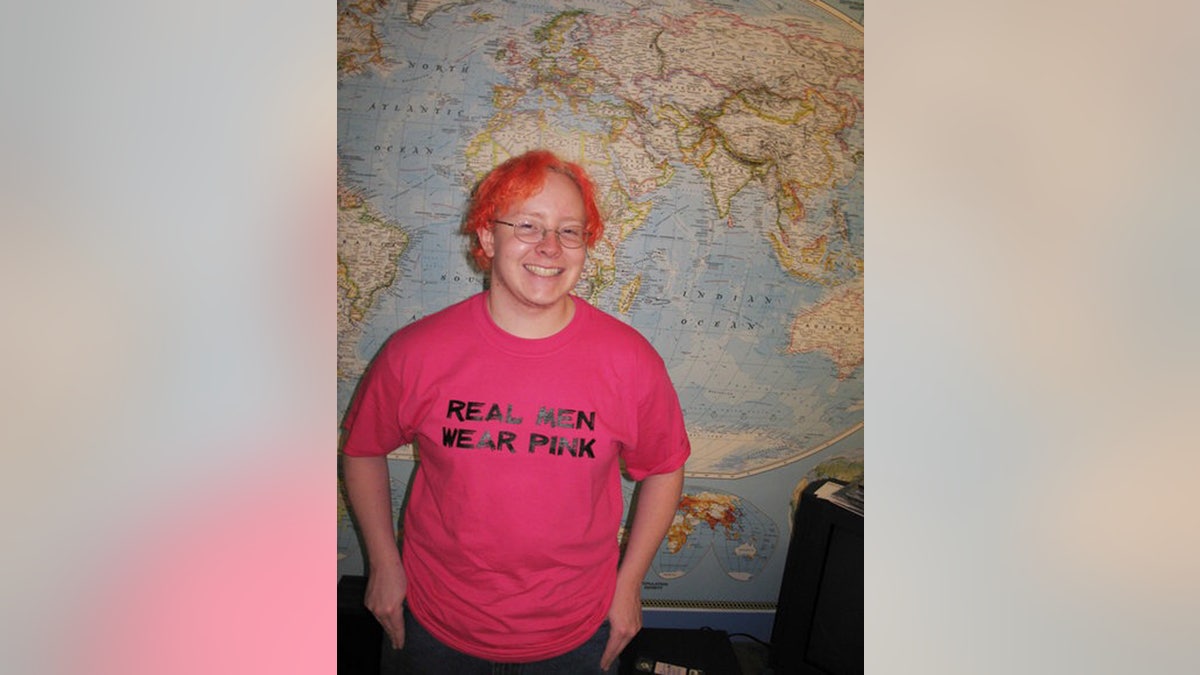Shocking LGBT suicide rates: Emotional story explains why
Statistics show the LGBT community faces issues of suicide at a higher rate than the general population. Advocates speak out to let the community know there is hope
Deric Metzger calls his former boyfriend, Brian Shaughnessy a “survivor.”
“When Brian was younger, he was diagnosed with leukemia. And of all the things he lost, fighting leukemia, his compassion and sense of humor weren’t among them,” Metzer, 32, told Fox News. “He lost weight, he lost years of his life and he lost his hair, but he still knew more about his nurses and doctors than they knew about him.”
Shaughnessy survived the cancer and dyed his hair wacky colors as it grew back. Metzger said when people asked about Shaughnessy’s hair, he would tell them how he had cancer and he had beat it.
Despite overcoming cancer and the trials that come with battling a serious illness, Shaughnessy tragically killed himself on June 17, 2009, when he was only 24 years old.

After entering college, Shaughnessy began presenting symptoms of schizophrenia, a mental illness the Mayo Clinic describes as a severe mental disorder in which people interpret reality abnormally. Symptoms of schizophrenia can include, hallucinations, delusions, and extremely disordered thinking and behavior.
Shaughnessy’s diagnosis manifested in different ways throughout his relationship with Metzger. For example, they took very few photos together because Shaughnessy believed they would somehow be harmful for Metzger.

“Schizophrenia has a genetic component, sure, but some recent research indicates it can be induced by trauma, and trauma almost more than mental illness is the greatest precipitating factor to suicide for most people,” Metzger, who is currently a group facilitator for Survivors of Suicide Loss (SOSL), said. “And when we talk about mental illness and suicide, especially among minority groups, we always look for that one cause.”
Shaughnessy suffered through many traumas in his early battle with cancer but Metzger believes that his suffered additional trauma because of his sexuality. Metzger said that one of the direct contributing factors to Shaughnessy’s suicide was Prop 8, a vote by Californians that made gay marriage illegal in the state.
“It’s amazing how with something that ultimately unimportant to who you are as a person can be considered persona non grata or public enemy number one by a certain vocal minority of people,” Metzger said.

Dr. Jack Drescher, a clinical professor of psychiatry at New York Medical College who was on the Diagnostic and Statistical Manual of Mental Disorders (DSM) V workgroup on sexual and gender identity disorders, told Fox News that while many mental illnesses are genetic, there are psychosocial aspects to mental health.
“If you stress a person with a vulnerability for depression enough, they can get very severely depressed and become suicidal,” Drescher said. “If you belong to a stigmatized minority group, whether it’s a racial minority group or… a gender or sexual minority group, there is an increased risk because there are all of these…moments in your life where you may be subject to stressers that the majority does not usually experience on a regular basis.”
Jillian Weiss, of the Transgender Legal Defense & Education Fund, told Fox News that these stressers can include, “employment discrimination, education, health care access, public accommodations. When people have to confront these things on a daily basis, it can make life more difficult."
Metzger believes factors like this contributed to Shaughnessy’s death.
“When you already have the trauma of an unsupportive world, and you factor in things like Prop 8, surviving Leukemia, having a mental illness, feeling incorrectly that you’re a burden on other people, that people would be better off without you, because that’s what your mind is telling you, because it’s already made the decision to self-destruct, and it’s just reverse engineering a way to get you to that place” he said.
Suicide rates within the LGBT community are higher than the general population, especially among youth. According to the Center for Disease Control and Prevention (CDC), nearly 29 percent of LGB youth had attempted suicide at least once in the prior year compared to 6 percent of heterosexual youth.
Weiss emphasized that while being a member of the LGBT community doesn’t automatically make a person more prone to suicide attempts, those who live in an open and tolerant societies are more prone to flourish.

“When they live in societies where they’re seen as lesser than and made to feel there is something wrong with them then, of course, we’re going to find more difficulties in people’s lives,” Weiss said.
Both Weiss and Metzger offer words of hope to the LGBT community. Metzger works to inform people who have suicidal thoughts and their loved ones that there are places that can offer assistance and urges others to speak out.
“The only weakness when it comes to suicide is silence, period,” he said. “And as someone who lost somebody to suicide, as somebody who in the aftermath of that tried to kill themselves, I need you to know – it’s a cliché but it does get better.”
Weiss echos Metzger and wants LGBT youth to know that life in the community isn’t bleak.
“The fact is that, you know, someone who is growing up, who realizes that they are gay or bisexual, transgender, the fact is they are going to be part of a very vibrant community of people who are contributing to our country and who are in all professions, of all backgrounds,” she said.
Resources:
Survivors of Suicide Loss
Transgender Legal Defense & Education Fund
American Association of Suicidology
Center for Disease Control and Prevention
The Trevor Project (Trevor Project Lifeline: (866) 488-7386)
The National Suicide Prevention Lifeline: (800) 273- 8255
